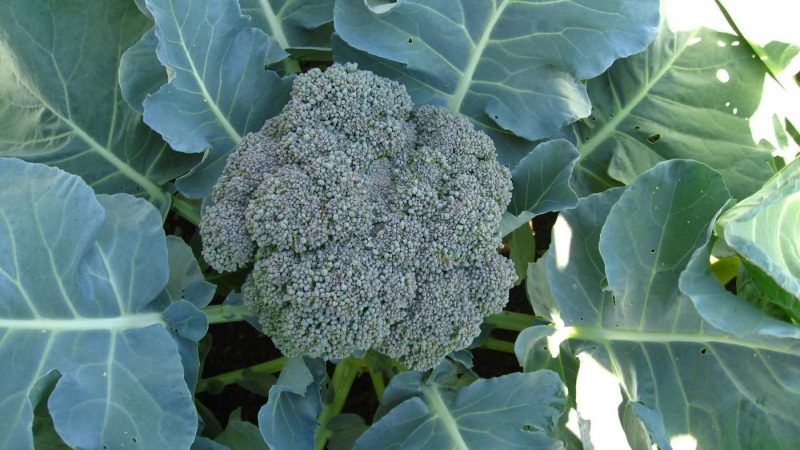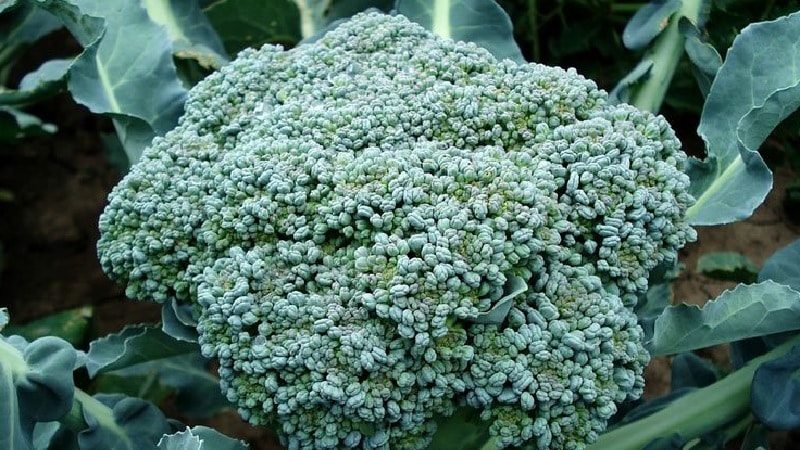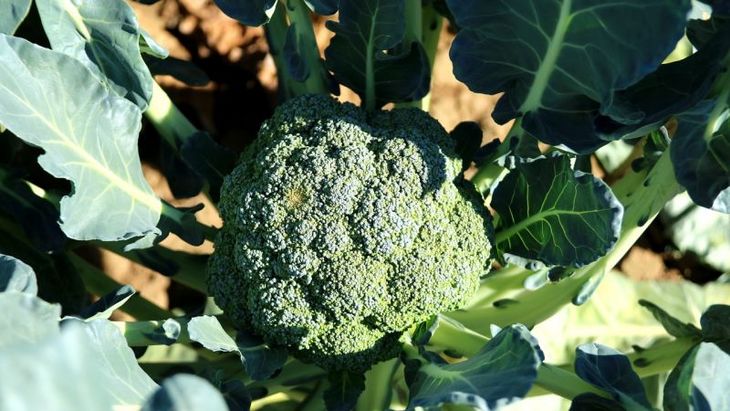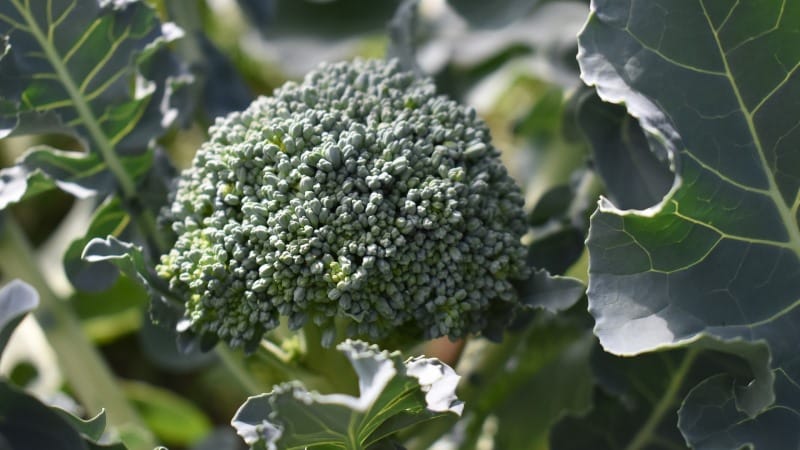The best varieties and hybrids of broccoli for Siberia and features of their cultivation
Broccoli has become popular due to its high content of minerals, vitamins, fiber and delicate taste. The unpretentious crop is resistant to cold, so its varieties and hybrids are grown until frost. Even the natural conditions of cold Siberia do not affect the plant’s ability to grow and develop normally. We will tell you about the best varieties of broccoli for growing in open ground and greenhouses in Siberia, based on reviews from experienced gardeners.
The best varieties and hybrids of broccoli for Siberia
For cultivation in the northern regions of Russia there are varieties and hybrids that ripen early, are not afraid of the cold and do not require special care.
For open ground

For planting on a personal plot in cold areas, varieties and hybrids with minimal ripening periods are selected - early and mid-season broccoli. The varieties are distinguished by excellent taste and the suitability of the seed material for subsequent propagation of the crop, but they take longer to ripen. Hybrids on packages are marked with F1. They are good because they produce high yields, are resistant to pests, and are stored without loss of presentation and nutrients. However, the taste of hybrid broccoli is inferior to varietal broccoli, and the seeds are not suitable for planting.
When planning to plant a crop in unprotected soil, choose the following varieties and hybrids.
Lazarus
Cabbage of this variety has very early ripening periods.The period from planting to the formation of large and dense heads of cabbage is 70 days.
Broccoli F1
The hybrid is characterized by an average density of rich green heads, as well as the ability to be stored for several months, maintaining its taste.
Tone
The harvest is ready for harvest in 2.5 months. The central head weighs about 200 g, and the side inflorescences weigh 70 g each. Their color is dark green, their delicate taste resembles young canned peas.
Linda
It takes 85-90 days from germination to maturity of the heads. The leaves are small in size, gray-green in color, bubbly, with wavy edges and a thin waxy coating. The heads of cabbage are dark green, round in shape, weighing 300-500 g. Instead of the cut head, 6-8 small heads from 50 to 70 g are formed. The variety is characterized by high yield and resistance to diseases.
Emperor
The growing season until full ripeness lasts about 80 days. The heads have an interesting appearance: the inflorescences are dark green, grow in the form of fir trees and have a cone shape. Average weight - 400 g.
For growing in a greenhouse
In Siberian natural conditions, broccoli grows well in greenhouses and greenhouses. This method of cultivation makes it possible to obtain cabbage crops with medium and late ripening periods and a shelf life of more than 2 months.
The following are varieties and hybrids of Siberian cabbage selection suitable for growing under cover.

Lucky F1
A high-yielding, early-ripening, disease-resistant hybrid of broccoli, the heads of which grow to a significant weight of 900 g. The harvest ripens within 70 days from the moment of planting.
Continental
Forms heads of cabbage weighing almost 600 g. The round heads have a pleasant taste and can withstand transportation. When the main head of cabbage is cut, 4 new ones are formed.
Marathon F1
It is resistant to low temperatures and has a high yield - 3.5 kg per plant. The growing season of shoots is approximately 80 days after planting the sprouted seeds in the ground. Heads of cabbage grow weighing up to 1 kg. The vegetable has a pleasant taste, especially when pickled.
Calabrese
The culture produces a dense turquoise-colored head weighing about 400 g. The cabbage is resistant to frost and adverse weather conditions.
Arcadia
Heads of cabbage are harvested 3.5 months after shoot germination. The head is tuberous, weighs about 0.5 kg, the mass of the lateral ones reaches 70 g.
Monterey F1
A mid-late productive hybrid, producing heads of cabbage weighing 1.5 kg. The central head of dark green color is formed by lateral forks. In a greenhouse, it is important to monitor the temperature and humidity.
Early varieties

Breeders have developed many early varieties and hybrids of broccoli for cultivation in the northern regions of Russia. They are characterized by resistance to cold and low maintenance.
The short growing season makes it possible to harvest the crop long before frost arrives. From sowing seedlings It takes 2-3 months until maturity. Early varieties of broccoli have a short shelf life, so they are often used fresh, sometimes frozen and canned.
We offer an overview of early broccoli varieties suitable for the Siberian climate.
Zedek
One of the earliest ripening varieties, managing to ripen in 70 days. It is most often chosen by gardeners for growing in harsh weather conditions.
Lord F1
Very tasty and high-yielding cabbage. Sowing of seedlings is carried out from mid-March; in the second ten days of April, cabbage is planted in the ground. The head of cabbage reaches maturity 2 months after planting. Lateral inflorescences weighing 150-200 g are formed until late autumn.From 1 m² you get about 4 kg of vegetables.
Green Magic F1
The early ripening hybrid was bred by French breeders, who endowed cabbage with excellent taste. The growth period from germination to a mature head of cabbage lasts 2-2.5 months with the seedling method of cultivation and 1-2 weeks longer with direct sowing in the soil. The head is large, dome-shaped, of medium density, weighing 500-700 g. The leaves are gray-green. The hybrid has remontant properties, resistance to diseases and pests. From 1 m² they collect up to 2.2 kg.
Mid-season
The average ripening cabbage harvest is harvested approximately 105-130 days after sowing the crop for seedlings.. For a favorable growing season, it requires not only a longer time, but also a high temperature - at least +20°C. The cooler the summer, the slower the vegetable grows. In this regard, in the cold regions of Siberia, it is more efficient to grow mid-season broccoli in greenhouses. Most often, gardeners choose the following varieties and hybrids.
Ironman F1
High yield hybrid. The leaves and head are blue-green in color. The head is dome-shaped, medium-sized, dense, weighing about 500 g. The leaves are medium-sized, gray-green, bubbly, with a wavy edge. From planting seedlings until the first heads of cabbage fully ripen, it takes approximately 80 days. Gives secondary heads. Up to 3 kg of crop is harvested from 1 m². The hybrid is used fresh and for freezing.
Dwarf
The variety is characterized by small, fine-grained, green elliptical heads with a gray tint. The weight of the head of cabbage reaches 550-600 g. Full ripening occurs 2.5 months from the day the seedlings are planted in the soil. Productivity is 3-4 kg/m². The variety is suitable for fresh storage and canning.
Batavia F1
From germination to setting heads, 90-95 days pass. Cabbage has dense, green, gray leaves with wavy edges. The head has the shape of a ball, smooth or lumpy, dense, weighs 500-700 g. It produces many secondary heads, the size of which depends on agrotechnical conditions. Full ripening of heads of cabbage occurs 2 months after planting the seedlings.
Important! The advantage of these varieties and hybrids is their longer storage period than the earlier ones.
Late varieties

In Siberia, late-ripening varieties are planted in protected soil. It takes 130-145 days to form and ripen heads of cabbage from seeding to technical ripeness. But this wait for the harvest is compensated by its long fresh shelf life. Late cabbage is used for freezing and preserving for the winter.
The following varieties and hybrids are popular.
Miranda
The head of cabbage is formed from large unusual purple inflorescences, its average weight is about 1 kg. The average late ripening period is 95-105 days after planting seedlings in the soil. It is applied for preparations salads, boiled or fried side dishes. The yield of the variety is 2.5-4 kg/m².
Parthenon F1
Cabbage grows into a single stem up to a meter high, forming a vertical rosette on it. The head is dome-shaped, flattened and smooth, high density, medium to large in size with a turquoise hue. The weight of the main inflorescence is up to 900 g. When good conditions are created (sparse planting pattern, timely watering, fertilizing), it forms lateral inflorescences in moderate quantities. From 1 m² Parthenon produces up to 3.3 kg of yield. Suitable for fresh use, frost and short-term storage in the refrigerator.
Monopoly F1
A productive (3.1 kg/m²) hybrid of Dutch selection is capable of forming secondary heads. The mass of the central head of cabbage is 600 g.
Features of growing broccoli in Siberia
If many varieties of broccoli and their hybrids (more than 200 species) are suitable for central Russia, then when cultivating cabbage in low temperatures, varieties with minimal ripening times are needed. The later ones do not have time to grow and fully ripen. A long growing season leads to the plant dying at the first frost.
Attention! The site for cultivating broccoli is chosen after grains, tomatoes, potatoes, onions, but not after cabbage, otherwise a high yield will not be achieved.
Using the seedling method on Siberian lands, several harvests are obtained per season if the biomaterial is planted with an interval of 2 weeks. After the cabbage seedlings reach a height of 10-15 cm and at least 5 leaves appear on small green stems, they are transferred to open ground. Seedlings no more than 7 weeks old are planted in open ground in April. Overgrown shoots will subsequently bring a poor-quality harvest - the heads of cabbage will grow small.
In the Siberian region, broccoli has gained popularity with the spread of polycarbonate, film, and glass greenhouses. It is not demanding of high ambient temperatures - +7...+10°C is enough for full growth. This temperature is maintained in heated greenhouses even at the end of April.
Conclusion
Despite the fact that short summers with low temperatures prevail in Siberia, broccoli is suitable for such natural conditions. Early varieties are most suitable for growing in cold areas in open ground, while mid-season and late varieties are grown in greenhouse conditions.